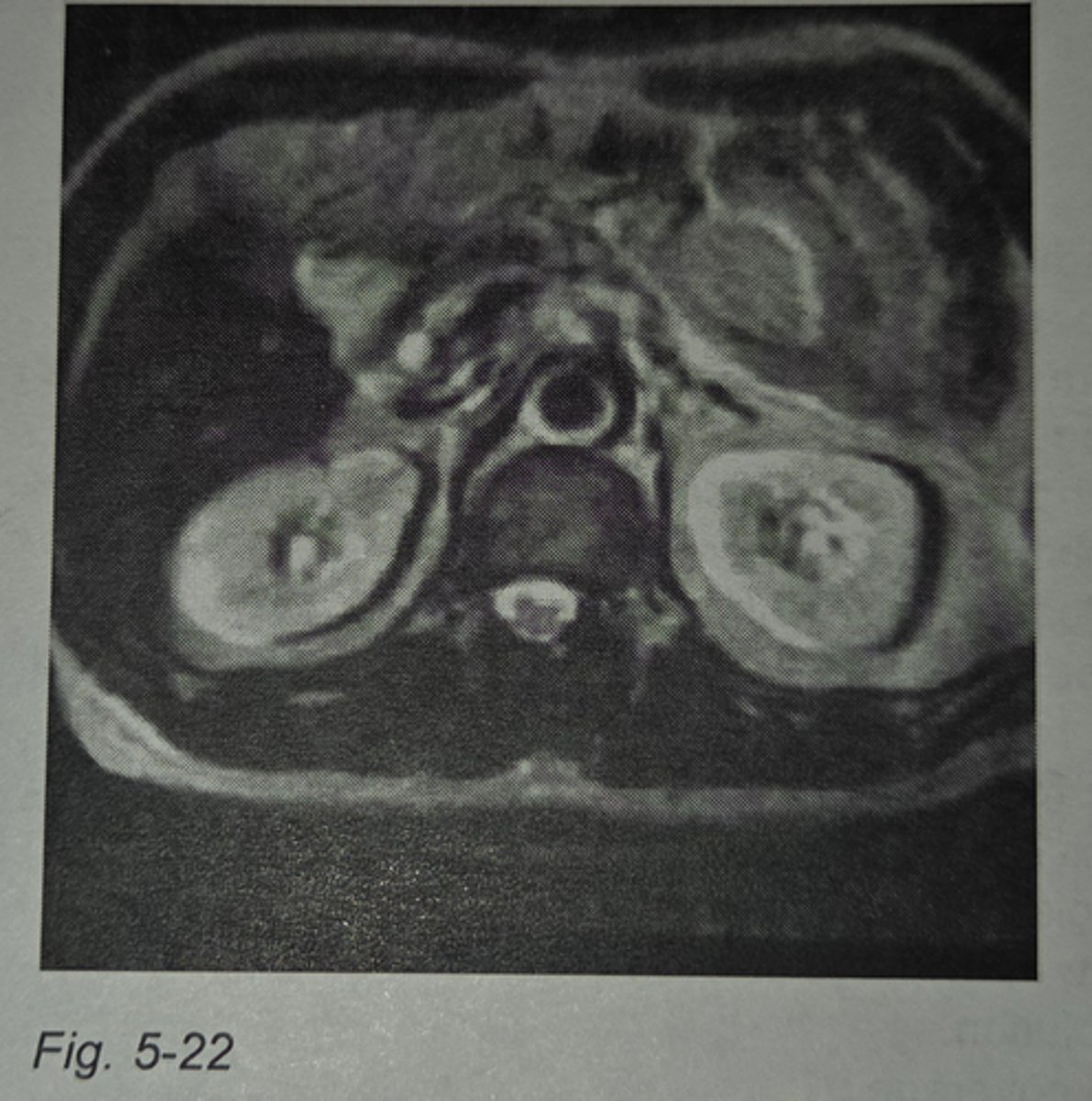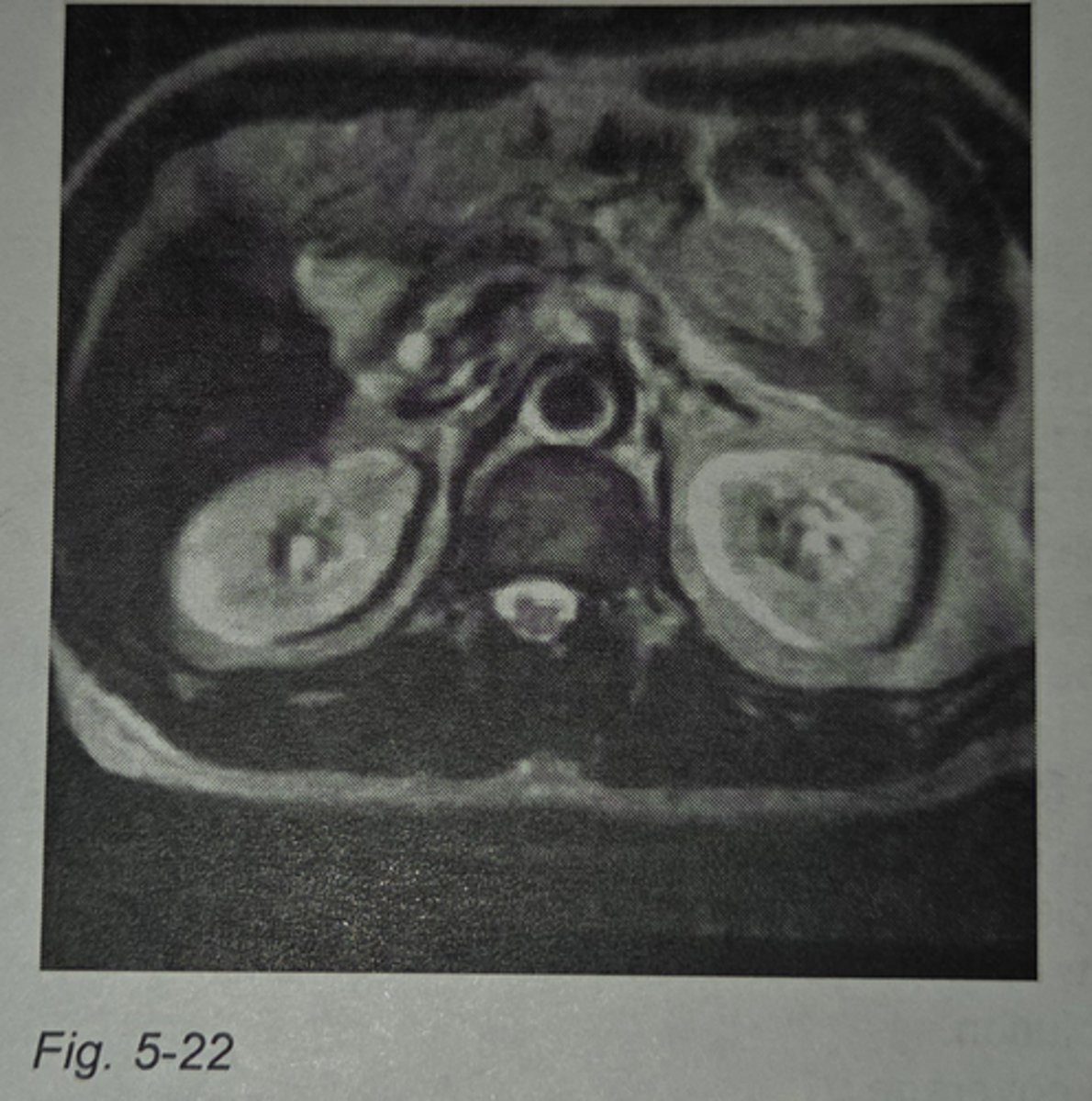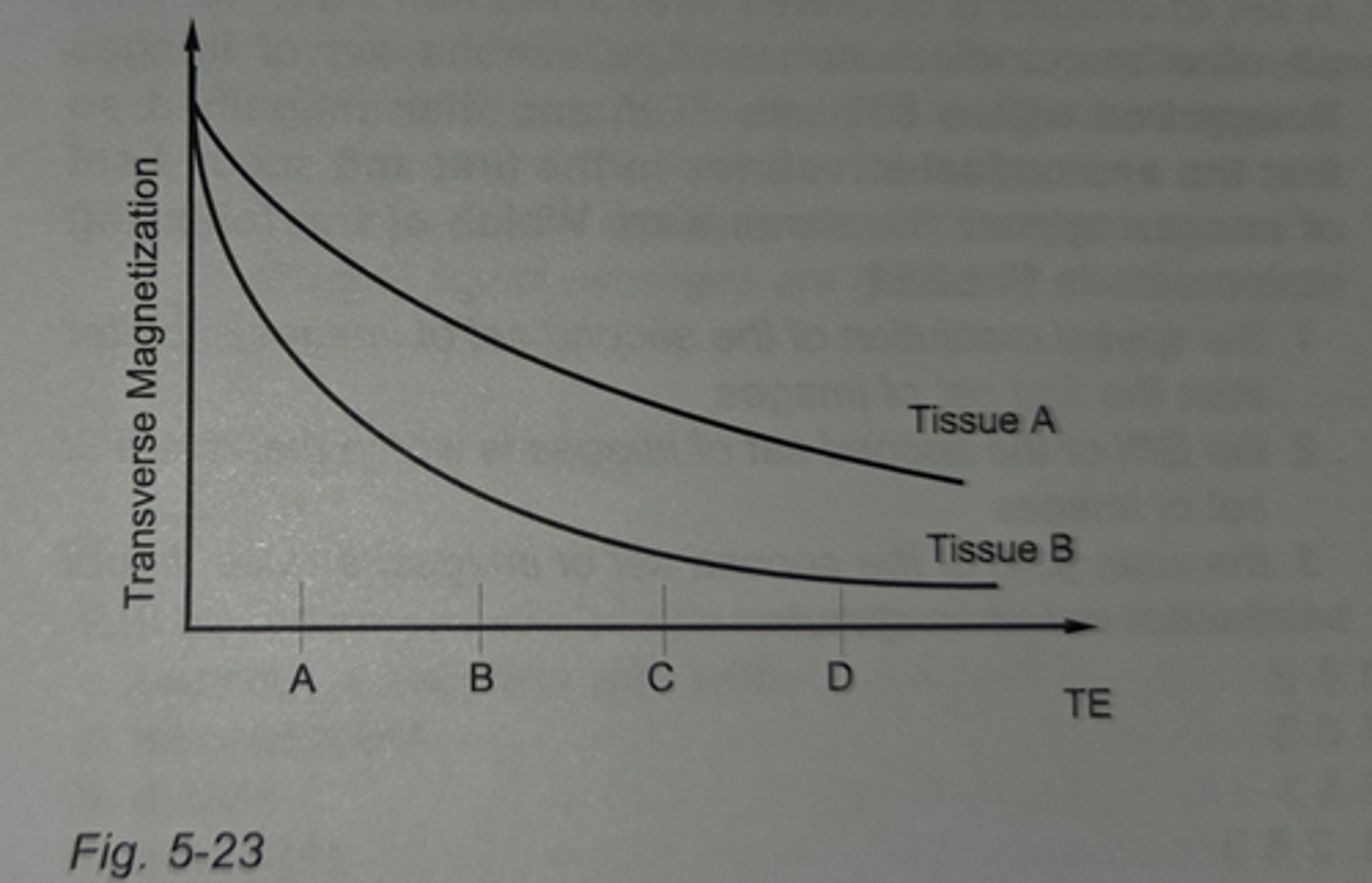Test 5: MR Imaging Parameters
1/39
There's no tags or description
Looks like no tags are added yet.
Name | Mastery | Learn | Test | Matching | Spaced |
|---|
No study sessions yet.
40 Terms
Assuming all other parameters are the same, an echo time of _____ms provides the best S/N.
15
3 multiple choice options
The smallest object that can be resolved in an image acquired with a 24 cm FOV and a 512 x 512 matrix is _____ mm.
0.47
3 multiple choice options
Which of the following would NOT be compensate for the change in S/N as a result of decreasing the FOV?
a decrease in number of signal averages
3 multiple choice options
Which of the following echo train lengths generate a set of images with the greatest S/N, assuming all other parameters are the same, and assuming the 1st echo forms at TE=50ms with the 10ms between all subsequent echoes?
3
3 multiple choice options
Which of the following echo train lengths generates a set of images in the shortest amount of time, assuming all other parameters are the same?
16
3 multiple choice options
A certain gradient echo sequence generates an optimal S/N with a repetition time of 250ms and a flip angle of 45°. If the TR is reduced to 200ms, how should the flip angle be changed to recover some of the lost S/N?
the flip angle should be decreased
3 multiple choice options
Which of the following is NOT affected by changing the slice thickness?
the T1 contrast
3 multiple choice options
Which of the following pulse sequence parameters is responsible for partial volume averaging?
slice thickness
3 multiple choice options
As the number of signal averages is increased from 1 to 3, which of the following does NOT occur?
the signal-to-noise ratio is three times better
3 multiple choice options
Which of the following statements is TRUE?
1. T1 contrast is maximized with short TRs
2. contrast is defined as the difference in magnetizations of two tissues
3. T2 contrast is maximized with short TEs
1 only
3 multiple choice options
During a spoiled gradient echo pulse sequence with 12 slices, how many gradient echoes are collected during one TR period?
12
3 multiple choice options
Which of the following statements is FALSE regarding a low receiver bandwidth?
1. it generates lower S/N images
2. it should be applied in regions of the body where there are fatty and watery tissues adjacent to one another
3. it is selected with a high readout gradient amplitude
1, 2 & 3
3 multiple choice options
The ____________________ in order to reduce the chemical shift artifact on the image in Fig. 5-22.
receiver bandwidth should be increased
3 multiple choice options

In the image shown in Fig. 5-22, along which direction is the frequency encoding direction of the image?
from left to right
3 multiple choice options

Which of the following is NOT related to the receiver bandwidth?
the range of frequencies transmitted to select the slice thickness
3 multiple choice options
Which of the following is a result of reducing the FOV?
1. anatomical structures appear smaller
2. increased S/N
3. improved spatial resolution
3 only
3 multiple choice options
If seventeen 5 mm slices are prescribed and a gap of 1mm is chosen, the total anatomical coverage is _____cm.
10.1
3 multiple choice options
Which of the following statements is FALSE regarding the spatial resolution of an image?
it may be calculated by dividing the matrix by the field-of-view
3 multiple choice options
The echoes collected from a 256x256 sagittal lumbar spine image have a frequency range that extends 14.1 kHz above and 14.1 kHz below the central frequency of the echoes. If this exam was performed on a 1.5 tesla MRI system, where there is approximately 220Hz chemical shift between fat and water, the signal in the vertebral bodies will shift _____ pixels relative to the signal in the disks.
2
3 multiple choice options
Which of the following is the correct scan time for a spin echo sequence with the following parameters: TR=2200ms, TE=20, 90ms, matrix=256x256, 1 excitation, FOV=230 mm?
9 minutes and 23 seconds
3 multiple choice options
When using a rectangular FOV, which is twice as tall as it is wide, and the phase direction of the image is oriented along the smaller dimension of the FOV, which of the following relationships between the frequency and phase steps of the matrix guarantees square pixels?
the number of phase steps must be half of the number of frequency steps
3 multiple choice options
If a pulse sequence allows a maximum of 18 slices for the desired repetition time, and 9 cm of anatomy must be covered, the minimum slice thickness we could use to cover the region of interest, if we were to leave no gaps is _____ mm.
5
3 multiple choice options
A pulse sequence is going to have a scan time of 4 minutes. If a technologist then selects to use parallel imaging with a parallel imaging factor of 2 without changing any other parameters, the scan time will now be _____ minutes.
2
3 multiple choice options
__________ is a method to reduce the MR scan time that also results in a loss of spatial resolution.
Reducing the matrix
3 multiple choice options
The approximate scan time of a rapid spin echo sequence with a TR of 3500ms, a TE of 90ms, a 256x256 matrix, 1 excitation, a 220 mm FOV an echo train length of 5 is _____ minutes.
3
3 multiple choice options
In order to partially compensate for changes in S/N how should the TR be adjusted when moving from a 1.5 tesla system to a 0.3 tesla system?
1. the TR should be decreased
2. the TR should be increased
3. the TR has no effect on the S/N
2 only
3 multiple choice options
Which of the following is a method of reducing the effects of crosstalk?
1. reducing the gap between slices
2. alternating the slice order
3. contiguous imaging
2 only
3 multiple choice options
A fast spin echo sequence with a TR of _____ms and a TE of _____ms will yield a proton density image.
2500, 20
3 multiple choice options
Assuming all other parameters are the same, a _____ms echo time provides the strongest T1 contrast.
1
3 multiple choice options
Using the T2 relaxation curve in Fig. 5-23, which of the following letters locates a point on the curve with the better contrast than the other three points?
D
3 multiple choice options

If the radiologist requires 2 mm slices through the pituitary, and 2.4cm of coverage, how many slices must be selected (assuming no gap)?
12
3 multiple choice options
Which of the following would compensate for the change in spatial resolution that results from decreasing the image matrix?
a decrease in the field-of-view
3 multiple choice options
Assuming all other parameters are the same, a _____ms repetition time provides the best S/N.
800
3 multiple choice options
If all other sequence parameters remain constant, but the echo time is increased:
fewer slices will be allowed
3 multiple choice options
If the TR is doubled, the scan time will:
double
3 multiple choice options
A technique used to reduce the MR scan time which requires the use of an array coil is:
parallel imaging
3 multiple choice options
A set of images is acquired with a 150 mm FOV. Keeping all other parameters constant, a second set of images is acquired with a 300 mm FOV, and then magnified so that the anatomical structures in the first and second set of images appear the same size. Which of the following statements is FALSE?
1. the spatial resolution of the second set of images is better than the first set of images
2. the S/N of the second set of images is worse than the first set of images
3. the scan time of the second set of images is twice that of the first set of images
1, 2 & 3
3 multiple choice options
When converting the recommended protocol for a fat suppression inversion recovery sequence from a low field MR system to a high field syste, the ____________________ in order to maintain equivalent fat nulling.
T1 should be increased
3 multiple choice options
Assuming all other parameters are the same, a _____ms echo time provides the strongest T2 contrast.
110
3 multiple choice options
What is wrong with a T2-weighted, fast spin echo image that has a 1.2 sec. TR and an 85 msec TE?
1. the TE will cause the image to have a low S/N
2. the TE will cause the image to have very little T2 contrast
3. the TR does not effectively minimize the T1 contrast
3 only
3 multiple choice options